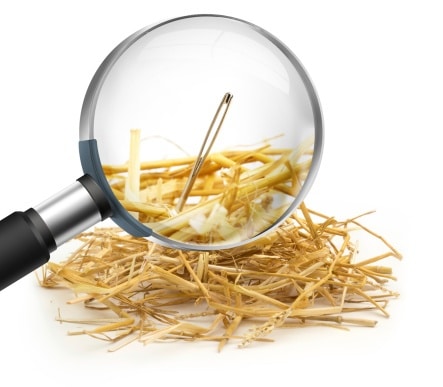Blog
Telehealth Doesn’t Have to Be This Hard

Finding a needle in a haystack is a problem many of us don’t literally have to worry about it in our day to day lives. In fact, I’m pretty confident no one has ever had to find a needle in an actual haystack – that being said we are constantly tasked with analogues problems in our daily life, both personally and professionally. When faced with a haystack you have the traditional way of finding the needle and then 2 more unorthodox ways of solving the problem – you can search through the hay, use a magnet or burn the hay to the ground leaving our needle in place.
Within home health care the analogy is quite fitting – virtually every pre-go-to-market interview we had with clinicians and home health administrators we heard the same feedback – telehealth is great except it is exhausting looking through patient data trying to find the ones we need to worry about next.
When it comes to sifting through the valuable data that is captured through the many telehealth initiatives deployed over the last decade, clinicians have essentially been given those 3 same options I outlined above.
They can either sift through raw tonnage of data looking for a patient that is in the trouble zone (old fashioned looking).
Alternatively they can pull out the patients that are a concern by looking for specific criteria (the magnet).
Or finally, they can shelve the entire initiative because it was too daunting (burning it all to the ground).
What if there was a better way, what if a beacon could light up the needle – letting you know where to look without you having to apply your own magnet to the data?
Even better what if before the needle falls into the hay you could catch it… now that is where the real value lies.
Machine Learning can and will provide a plethora of value to home healthcare over the next decade, there will be many different applications no doubt – the one we feel most passionately will impact the outcomes of patients is in our ability to look at the data being captured by our telehealth patients and flag patients who while not in the ‘needle in the haystack zone’ yet are heading that way.
If a patient’s vitals are all not quite in the danger zone but have slowly been heading that way in a similar way as X% of other patients who had a relapse we can’t assume the human eye will catch it.
While we aren’t saying Machine Learning will substitute for the clinician, we are saying let’s make the clinicians job exponentially more strategic focused, giving the clinician a heads up that our patient is exhibiting the same pattern and he or she should take a closer look.
That is what is making us and our customers happy as a farmer who actually finds a needle in his or her haystack.



